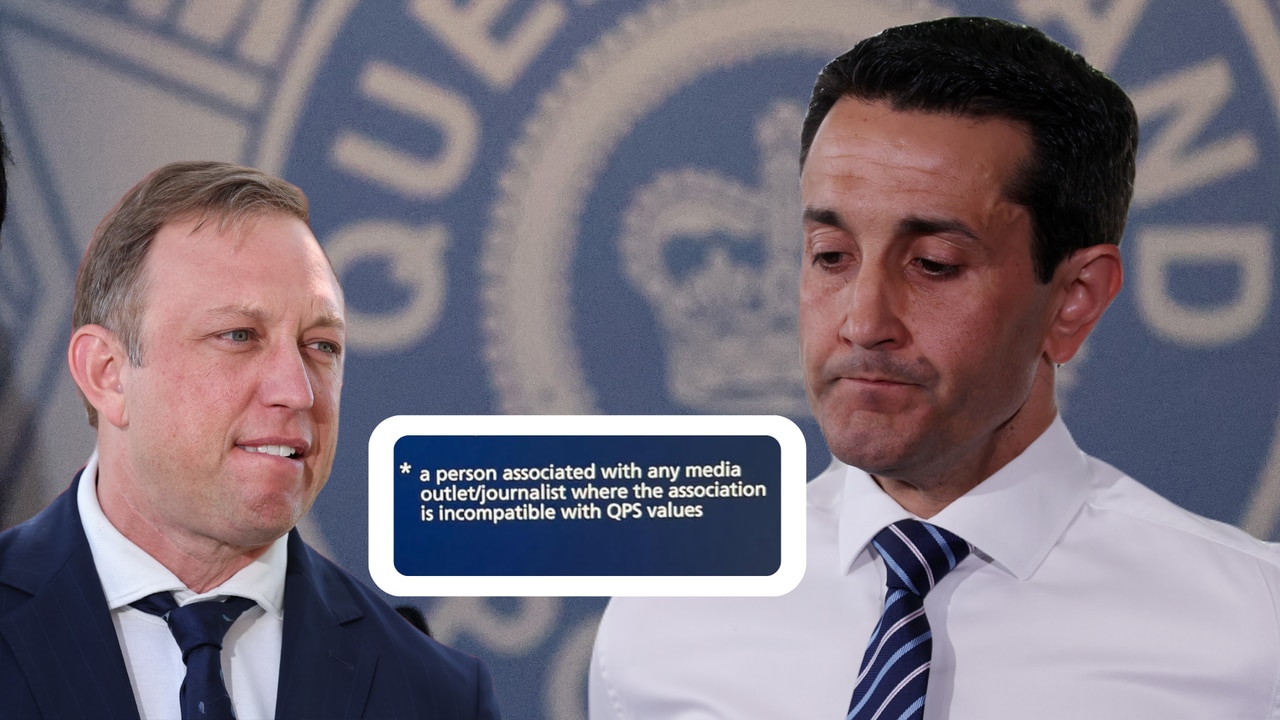Domestic violence skyrockets in Queensland
Domestic violence abusers are breaching orders in Queensland more than ever before, new police figures show, with skyrocketing offences increasing fourfold in the past decade.

QLD News
Don't miss out on the headlines from QLD News. Followed categories will be added to My News.
Domestic violence abusers are breaching orders in Queensland more than ever before, with skyrocketing offences increasing fourfold in the past decade.
Queensland Police Service figures show 262 per 100,000 people in 2012 breached their orders, with the rate increasing to 1130 in 2023.
The trend is continuing this year, with thousands of people breaching orders, taking up more police time than ever before.
Figures show the rate of assaults related to domestic violence has also more than tripled since 2020-21, increasing from 154.1 per 100,000 people to 518.9 in 2022-23.
The huge increase followed police changing the way domestic violence was dealt with, having previously come under fire for not being proactive until multiple deaths and inquiries.
In July 2021 police started charging people with more offences, later admitting that when a person was previously charged for a DVO breach, associated offences such as assaults “may not have been recorded”.
After the changes, in 2021-22 the rate of all offences against people in Queensland increased a staggering 45 per cent, compared to the previous year.

Police Commissioner Steve Gollschewski told The Courier-Mail there had been 192,000 DV occurrences last year and there had been a 12 per cent increase in 2024 and a 15 per cent increase in breaches.
He said in many cases in the past police tried to de-escalate the situation because that’s what many DV survivors wanted, rather than partners being sent to jail.
“I think just historically … a lot of what happened that was considered domestic (and) family violence wasn’t captured,” Mr Gollschewski said when asked why police didn’t record all offences in the past.
“So we then recognised that as time went by and things like the Not Now Not Ever report and a number of the different inquiries … that that was a real shortfall.
“And we then went back and said, no the criminal behaviour has to be addressed and we need to capture that,” he said of the changes to the way they reported DV in 2021.
“That’s really appropriate, because these are offences, we want those offences addressed.
“It’s really clear now that … most of the assaults that we have got are in the domestic and family violence space.”
Bond University criminologist Dr Terry Goldsworthy, who identified the major shift in policing DV, said officers were now taking appropriate action when there was a breach of domestic violence orders and were at better risk-managing offences.
“In terms of attributing the increase to the change (in recording offences against people), I would suggest most of it can be assigned to police failing to take actions previously,” Dr Goldsworthy said.
“This is especially so when you look at the number of DVO orders being taken out has actually decreased over the last 5 years.
“Certainly the rate (of breaches) since 2012 has gone up, which reflects a growing awareness of DV becoming a core policing issue in terms of it rather than being seen as a distraction or side issue.”
Red Rose Foundation CEO Brian Sullivan, who is also on numerous DV committees and provides training to police, said the service was overall on the way to a cultural shift.
“I think police generally are better at identifying trauma responses in victims,” he said.
“So instead of saying a woman is an unreliable witness or she’s a hysterical, angry woman, (they are) starting to realise that this response might be a trauma response from this victim.”
But Mr Sullivan said the entire system – of policing, courts and programs – needed to change to ever see a drop in domestic violence from abusers who were predominantly men.
Mr Sullivan said he estimated there would only be as little as 1500 men in DV intervention or behaviour change programs with the annual statistics showing 59,000 breaches in 2022-23.
“What is happening to those other men, the majority of perpetrators not getting any support for change?
“The government is going to have to increase the quantity and quality of mens programs out there.”
Originally published as Domestic violence skyrockets in Queensland


